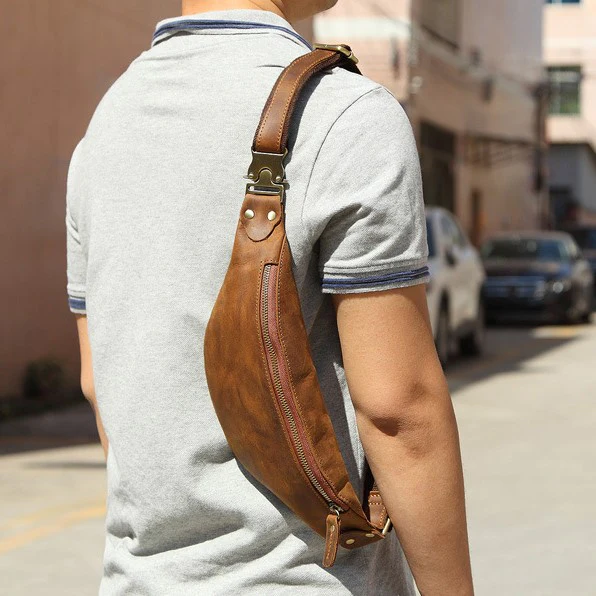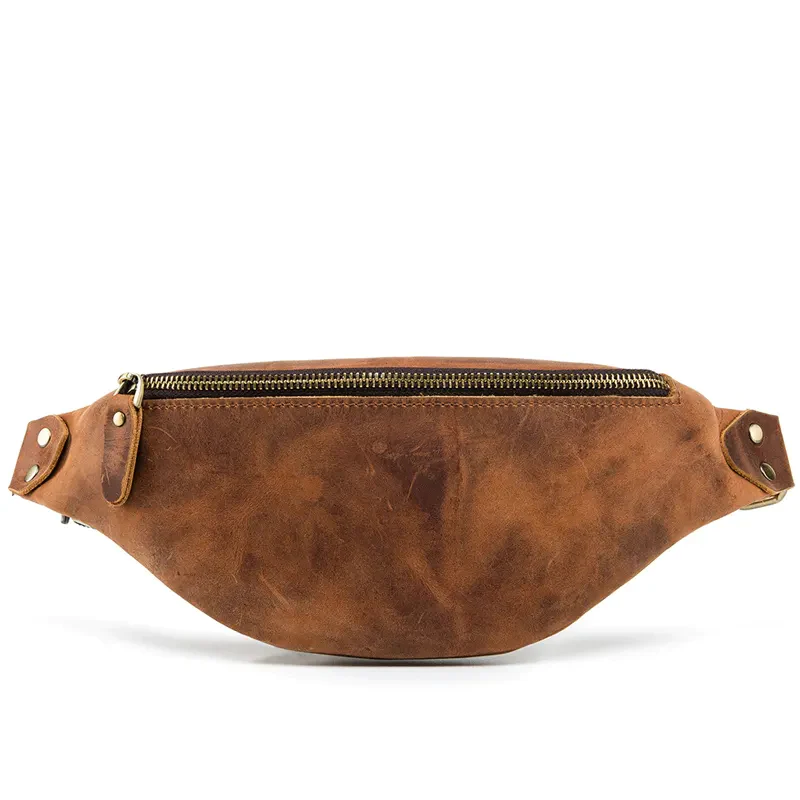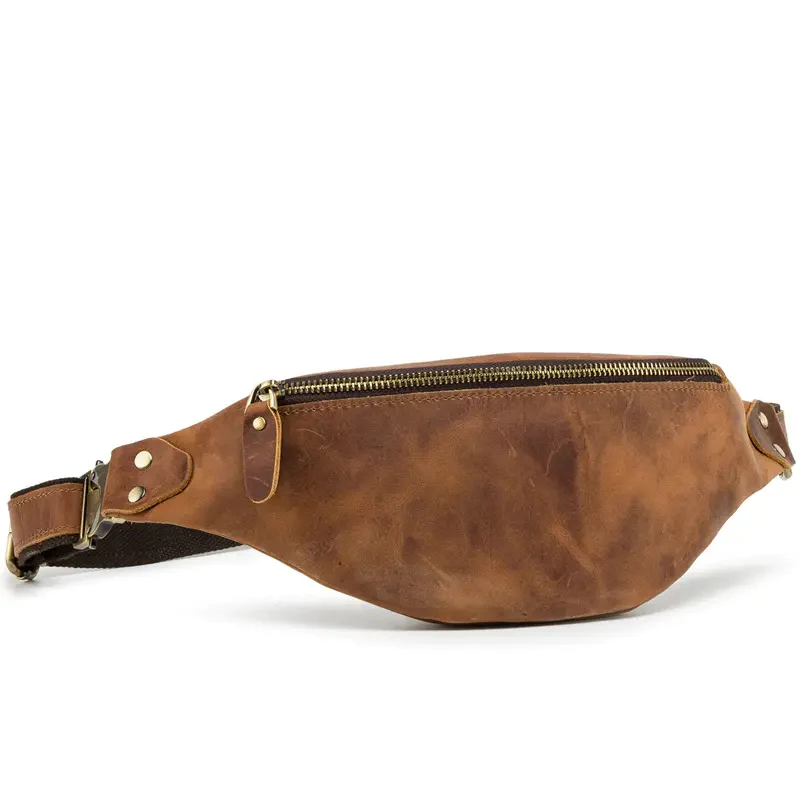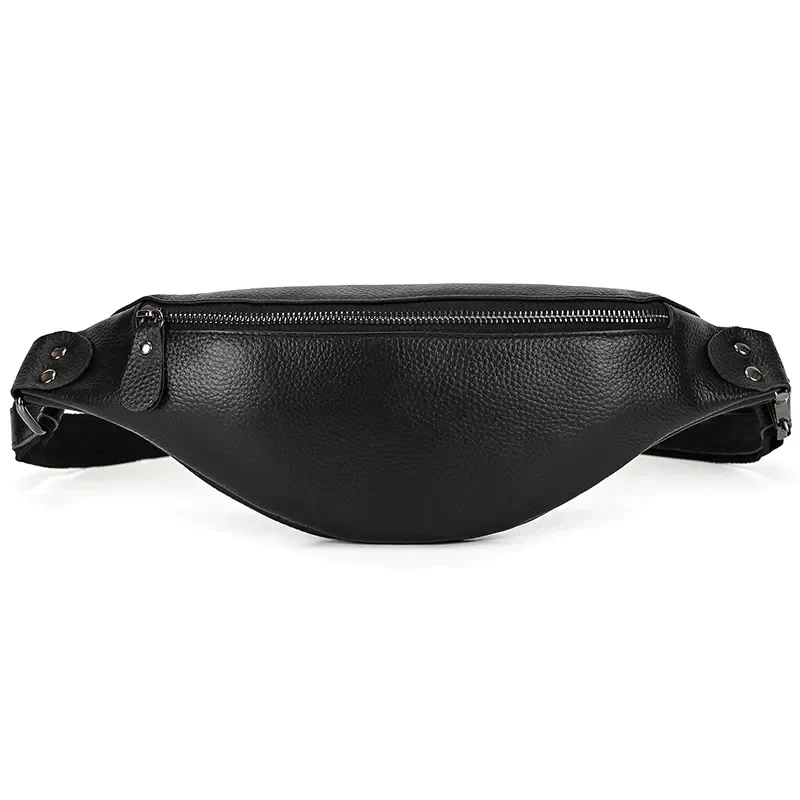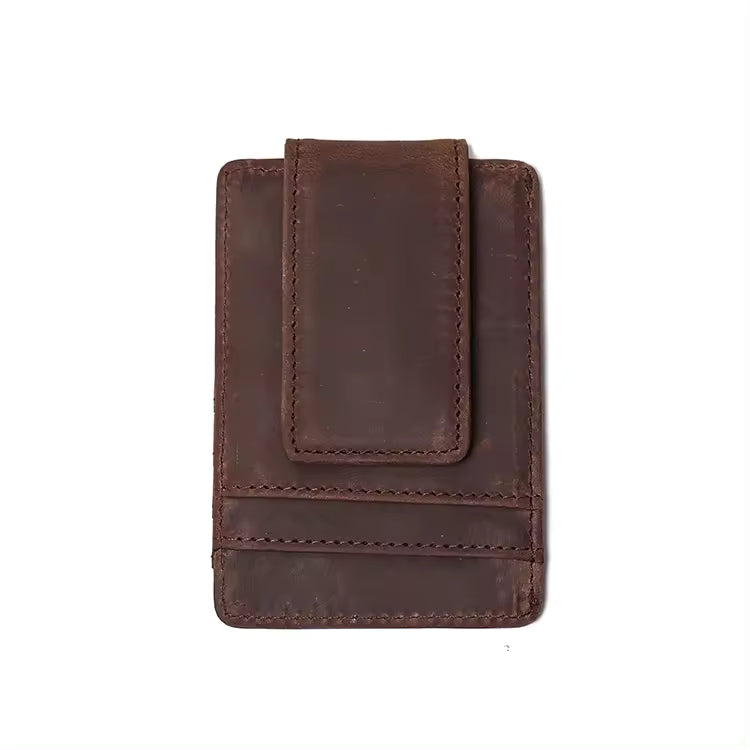In the world of fashion, diverse cultures influence belt bags, blending traditions into modern trends. Belt bags act as cultural icons, bridging past and present styles, rich in historical significance. These accessories carry symbols of freedom and heritage, adapting across different regions and reflecting societal evolution. From Asia to the Americas, each culture leaves a unique mark on belt bag design. Contemporary fashion mixes traditional elements with global influences, creating a fusion that transcends borders. By exploring how belt bags represent status, identity, and heritage, you uncover a world where fashion diplomacy celebrates diversity and ethical practices sustain traditions. Explore a world where fashion meets culture in unexpected ways.
Key Takeaways
-
Belt bags serve as cultural icons that bridge traditional heritage with contemporary fashion, carrying symbolic meanings that vary across different societies and regions worldwide.
-
Each geographic region has developed distinct belt bag styles influenced by local materials, techniques, and cultural traditions, from Asian embroidery to African indigenous craftsmanship.
-
Modern belt bag designs successfully blend traditional cultural elements with global fashion trends, creating accessories that appeal to diverse audiences while honoring their historical roots.
-
Celebrity influence and pop culture have played crucial roles in popularizing cultural belt bag trends, helping to promote diversity and cross-cultural appreciation in mainstream fashion.
-
Sustainable and ethical production practices are essential for respecting cultural traditions in belt bag manufacturing, supporting fair trade and preserving artisanal craftsmanship.
Our Expertise in Traditional Leather Craftsmanship and Cultural Heritage

At Steel Horse Leather, we bring decades of traditional leatherworking expertise to our understanding of belt bags as cultural artifacts. Our master artisans have dedicated their lives to perfecting the ancient craft of leather goods creation, using time-honored methods passed down through generations. This deep immersion in traditional techniques gives us unique insight into how belt bags have evolved across different cultures and why certain design elements have persisted throughout history. We don't just study these cultural influences from an academic perspective – we live and breathe the craftsmanship traditions that have shaped belt bags across continents.
Our holistic approach to sourcing and creating leather goods has taken us on a journey through various cultural traditions and regional techniques. We've worked extensively with artisans from different backgrounds, learning firsthand how cultural values and practical needs have influenced belt bag design in various societies. This hands-on experience, combined with our obsessive attention to the provenance and processing of our materials, allows us to speak authoritatively about the cultural significance and traditional craftsmanship behind these timeless accessories. When we discuss the evolution of belt bags from functional necessity to cultural symbol, we're drawing from our own experience of preserving these traditional methods while adapting them for modern travelers.
The Variations and Evolution of Belt Bags in Different Eras
| Era/Context | Variations & Evolution of Belt Bags | Purpose & Significance |
|---|---|---|
| Ancient Civilizations | Simple leather pouches. | Primarily practical; carried essential items securely for travelers, allowing freedom of movement. |
| Over the Centuries | Adopted various styles reflecting cultural context and technological advancements. | Evolved with changing fashion norms and practical needs of different periods. |
| Victorian Era | Decorative patterns. | Served as functional accessories while also incorporating aesthetic trends of the time. |
| Modern Era | Resurgence with a fusion of vintage aesthetics and contemporary trends, incorporating innovative materials and designs. | Caters to today's fashion-savvy consumers, reflecting individual expression and functionality; became a timeless staple. |
The variations and evolution of belt bags throughout different eras highlight their enduring appeal and adaptability in the fashion landscape. Initially serving practical purposes in ancient civilizations, these accessories catered to the needs of travelers, carrying essential items securely while allowing freedom of movement. Over the centuries, belt bags have transformed, adopting various styles that reflect their cultural context and the technological advancements of the time. From the simple leather pouches used by early nomads to the decorative patterns seen in Victorian-era designs, each period has contributed to the rich tapestry of belt bag history. In the modern era, the resurgence of belt bags has resulted in a fusion of vintage aesthetics with contemporary trends, bringing innovative materials and designs that cater to today's fashion-savvy consumers. The evolution of belt bags not only tells the story of changing fashion norms but also illustrates how these accessories continue to resonate with different generations, making them a timeless staple in personal expression and functionality.
Recognizing the Impact of Cultural Diversity on Fashion Trends
Understanding how cultural diversity influences fashion trends is essential in appreciating the evolution of belt bags across different regions and societies. In exploring the history of fashion, it becomes evident that festival fashion has played a significant role in shaping contemporary trends. Modernity in fashion has led to the rise of fashion accessories like belt bags, which have become staples for fashion-forward individuals seeking a blend of traditional influences and contemporary style. Cultural diversity has paved the way for global trends to emerge, with each region contributing unique elements to the fashion landscape.
As belt bags continue to evolve, they reflect a fusion of various cultural elements, making them versatile accessories that can be incorporated into diverse fashion styles. By recognizing the impact of cultural diversity on fashion trends, one gains a deeper appreciation for the rich tapestry that shapes the world of fashion and the role that belt bags play in this dynamic environment.
Introducing the Role of Belt Bags as Cultural Icons

Introducing belt bags as cultural icons showcases their significance in bridging traditional influences with modern style in the fashion world. Belt bags have evolved from functional items to iconic fashion pieces that reflect the rich tapestry of global trends and traditions. These versatile accessories not only serve practical purposes but also carry historical significance, symbolizing a blend of cultural influences in contemporary style.
From the streets of Tokyo to the runways of Paris, belt bags have become synonymous with cultural diversity and individual expression. They effortlessly complement both traditional wear and modern outfits, making them a staple in fashion accessories worldwide. The ability of belt bags to adapt to various cultural contexts highlights their status as cultural icons, transcending geographical boundaries and resonating with fashion enthusiasts everywhere.
Incorporating a belt bag into your wardrobe is not just about following a trend; it's about embracing a piece of history and culture that has been reimagined for today's fashion landscape. So, next time you reach for a belt bag, remember the global heritage and cultural significance it carries, making it more than just a stylish accessory.
Historical Perspectives
Let's take a journey through time to explore the historical roots of belt bags in various cultures. From early examples found in traditional dress to their practical use in utility wear, belt bags have a rich history that transcends borders and eras. Discover how these functional accessories have evolved over time, reflecting both fashion trends and the needs of different societies.
Tracing the Origins of Belt Bags in Various Cultures
The historical roots of belt bags can be found in a diverse array of cultures across the globe. From ancient times to the 19th century travelers, these accessories have evolved from antique belt pouches and kidney bags to modern zippered pockets and stylish external pouches. Different traditions and global trends have influenced the design and functionality of belt bags, making them not just practical but also fashionable items. In various cultures, belt bags have served as essential utility wear, providing convenience and style simultaneously. Understanding the origins of belt bags in different societies sheds light on how these accessories have transcended time and place to become a popular fashion statement today.
Early Examples of Belt Bags in Traditional Dress and Utility Wear
Tracing back through history reveals early examples of belt bags integrated into traditional dress and utility wear, showcasing their practical and stylish significance in various cultures. Belt bags have served both functional and fashionable purposes, adapting to the specific needs of different communities. In traditional dress, these bags often complemented attire, offering a convenient way to carry essentials while enhancing the overall look. Similarly, in utility wear, belt bags provided hands-free storage solutions for tools, food, or other necessities, demonstrating their versatility across different contexts. These early instances of belt bag usage laid the foundation for the global trends we see today, illustrating how cultural influence has shaped the evolution of this accessory. Understanding these traditions is important when exploring the contextually relevant role of belt bags in contemporary fashion.
Regional Variations
When exploring regional variations in belt bags, you'll notice a fascinating array of cultural influences on design and usage. From the intricate embroidery of Asian belt bags to the bold colors and patterns of African styles, each region brings its unique flair to this practical accessory. Understanding these diverse approaches sheds light on how fashion can be a reflection of tradition and identity.
Exploring Cultural Differences in Belt Bag Design and Usage
When it comes to belt bag design and usage across different regions, each area brings its unique cultural influences. In Asia, traditional Asian garments play a significant role in shaping the style of belt bags. Europe showcases the evolution of belt bags in Western fashion, while Africa highlights the use of indigenous materials and techniques. The Americas, on the other hand, emphasize the cultural significance of belt bags within indigenous communities.
Asia: Influences from Traditional Asian Garments
Exploring the intricate melding of traditional Asian garments with modern belt bag design reveals a rich tapestry of cultural influences and regional variations. Influenced by Asia's diverse heritage, belt bags showcase elements like intricate embroidery, luxurious silk fabrics, and elegant kimono patterns. These traditional influences infuse a unique charm into the contemporary belt bag designs, reflecting the rich cultural tapestry of the region.
Europe: Evolution of Belt Bags in Western Fashion
The evolution of belt bags in Western fashion has transformed traditional accessory trends, showcasing cultural differences in design and usage across various European regions. From designer fanny packs to leather belt bags, the influence of 19th-century travelers can be seen in modern styles. Today, belt bags are not just accessories for individuals but have become integral parts of contemporary clothing, reflecting the ever-changing landscape of fashion in Europe.
Africa: Incorporating Indigenous Materials and Techniques
Incorporating indigenous materials and techniques, African belt bags showcase a rich tapestry of cultural diversity in design and functionality. African fashion draws inspiration from traditional craftsmanship, utilizing hand-woven fabrics and artisanal techniques passed down through generations. Local artisans skillfully weave tribal patterns into these accessories, reflecting ethnic influences and preserving cultural heritage. The blend of modern functionality with ancient traditions makes African belt bags truly unique in the global fashion landscape.
Americas: Cultural Significance of Belt Bags in Indigenous Communities
In indigenous communities across the Americas, belt bags hold significant cultural value, reflecting unique design elements and usage practices. These accessories are not just fashion statements; they are deeply intertwined with the history and traditions of these communities. From intricately woven patterns to symbols representing heritage, belt bags in the Americas showcase the rich cultural influence that shapes their design and meaning.
Symbolism and Meaning

When exploring the world of belt bags, it's fascinating to uncover the symbolic meanings they hold in various cultures. These bags often go beyond mere fashion accessories, acting as representations of status, identity, and cultural heritage. Understanding these deeper significances adds a layer of richness to the global trends and traditions surrounding belt bags.
Understanding the Symbolic Importance of Belt Bags in Different Cultures
Understanding the symbolic importance of belt bags in different cultures reveals the depth of meaning attached to this functional accessory. In various societies, belt bags hold significance beyond their practicality. For instance, in some cultures, they symbolize freedom and mobility, allowing individuals to carry their essentials while being unburdened. In other contexts, belt bags represent a connection to tradition and heritage, serving as a link to the past while adapting to modern trends. By exploring how belt bags are utilized and valued across different cultural landscapes, we gain insight into the diverse interpretations people assign to this accessory. This understanding enhances our appreciation for the contextually relevant role belt bags play in various global traditions and underscores their broader cultural influence.
Representations of Status, Identity, and Cultural Heritage
Exploring how belt bags symbolize status, identity, and cultural heritage reveals the pivotal meanings individuals attribute to this versatile accessory. Belt bags have evolved beyond mere fashion statements; they now serve as markers of social standing, reflecting one's status within a community. Additionally, these bags can communicate a person's cultural identity, offering a glimpse into their heritage and traditions. The way individuals choose to wear and style their belt bags can convey subtle messages about their background and values. In today's globalized world of fashion, these accessories play an essential role in representing not only personal style but also broader cultural influences. Whether adorned with intricate patterns or minimalist designs, belt bags continue to be a canvas for expressing one's status, identity, and cultural heritage in the ever-evolving landscape of fashion.
Modern Interpretations
When it comes to modern interpretations of belt bags, designers are blending traditional designs with contemporary fashion trends to create unique pieces that cater to a global audience. The fusion of cultural elements with global fashion influences is evident in the evolving styles of belt bags, showcasing a harmonious combination of heritage and modernity. As you explore the world of belt bags, you will discover a rich tapestry of creativity that celebrates both tradition and innovation in the domain of accessory design.
Adapting Traditional Belt Bag Designs to Contemporary Fashion Trends
Adapting traditional belt bag designs to contemporary fashion trends often involves a delicate balance between honoring heritage styles and integrating new elements to suit modern preferences. With the evolution of fashion and the influence of global trends, traditional belt bags have been reimagined to cater to the modern accessory market. Designers draw inspiration from cultural influences and historical designs, infusing them with a touch of modern flair. By blending the classic elements of traditional belt bags with the innovative styles of today, these accessories seamlessly bridge the gap between the past and the present. This adaptation process showcases the dynamic nature of fashion, highlighting how history can shape and inform the ever-changing landscape of modern fashion trends.
Fusion of Cultural Elements with Global Fashion Influences
To understand the fusion of cultural elements with global fashion influences in modern interpretations of belt bags, consider how designers seamlessly blend heritage styles with contemporary trends. In today's fashion scene, the 21st century has seen a remarkable mix of traditional influences and pop culture fashion trends converging to create unique accessories for fashion enthusiasts. The potential of fanny packs, with their surprising history, has been reimagined in ways that offer accessible fashion choices for individuals seeking both style and functionality. By combining elements from diverse cultures with modern fashion trends, designers have opened up a world of creativity, offering a fresh perspective on how accessories like belt bags can transcend borders and bridge different fashion aesthetics seamlessly.
Celebrity and Pop Culture Impact
Celebrities and influencers hold significant sway in popularizing cultural trends, including the rise of belt bags in fashion. With their vast reach and influence, they play a key role in showcasing diversity in fashion media and entertainment. The representation of various cultures through belt bag styles has become a notable aspect of the global fashion landscape.
Influence of Celebrities and Influencers in Popularizing Cultural Belt Bag Trends
Influencing the cultural belt bag trends, celebrities and influencers have played a significant role in popularizing this fashion accessory worldwide. Their influential presence in the fashion industry has helped propel belt bags into the mainstream, making them a must-have item for fashion-forward individuals. By showcasing these stylish accessories in their daily lives, red carpet events, and social media platforms, celebrities and influencers have effectively endorsed the trend, driving its popularity among their followers. With their global reach and influence, they have successfully integrated cultural elements into their fashion choices, bringing diversity and uniqueness to the belt bag trend. This fusion of cultural traditions with modern fashion trends has resonated with audiences worldwide, contributing to the widespread adoption of belt bags in various cultural contexts.
Representation of Cultural Diversity in Fashion Media and Entertainment
Within the domain of fashion media and entertainment, the vibrant tapestry of cultural diversity is vividly portrayed through the eclectic influences of celebrities and pop culture icons. The representation of cultural diversity in fashion media and entertainment has been notably impacted by the popularity of fanny packs. These versatile waist packs have made a strong comeback from their origins as practical accessories for 20th-century travelers. Now, fanny packs are seen on runways, red carpets, and in everyday street style, symbolizing a blend of past trends and modern fashion statements. Their cross-body and waist-worn styles have become staples in today's fashion, offering both functionality and style at an affordable price. Through the lens of global trends and entertainment, fanny packs continue to showcase a fusion of cultures and traditions in today's fashion landscape.
Fashion Diplomacy

When it comes to fashion diplomacy, belt bags serve as powerful symbols of cultural exchange and understanding. These accessories play a significant role in promoting cultural appreciation and collaboration within the fashion industry. By embracing belt bags from different regions, you actively participate in fostering a global sense of unity and respect through style.
Belt Bags as Symbols of Cultural Exchange and Understanding
Amidst the ever-evolving landscape of global fashion, belt bags serve as tangible expressions of cross-cultural connections and mutual appreciation, embodying the essence of fashion diplomacy. These versatile accessories have become symbols of cultural exchange, blending traditional designs with modern trends to create items that appeal to avid travelers worldwide. Belt bags, dating back to the 14th centuries, have transcended borders, becoming essential items for individuals seeking both style and functionality. By embracing various cultural influences, these bags foster understanding and collaboration across diverse traditions, showcasing the beauty of shared creativity and craftsmanship. Through their universal appeal, belt bags facilitate a dialogue of appreciation for each other's heritage, paving the way for a more interconnected and harmonious global fashion community.
Promoting Cultural Appreciation and Collaboration in Fashion Industry
Promote cultural appreciation and collaboration in the fashion industry by embracing diverse traditions and fostering mutual understanding through fashion diplomacy. By recognizing the cultural influence on belt bags and exploring global trends and traditions, the fashion industry can create contextually relevant designs that celebrate diversity. Collaboration among designers from different backgrounds can lead to innovative and inclusive collections that resonate with a wider audience. By acknowledging the significance of various cultural elements in fashion, such as the history and craftsmanship behind belt bags, the industry can move towards a more culturally sensitive approach. Embracing cultural appreciation not only enriches the creative process but also helps to build bridges between communities worldwide, promoting unity and understanding through the universal language of style.
Sustainability and Ethical Considerations
When considering sustainability and ethical considerations in belt bag production, it's vital to respect cultural traditions and support fair trade practices. By valuing and preserving cultural traditions, you contribute to the rich tapestry of global fashion in a significant way. Additionally, advocating for ethical practices guarantees that the fashion industry upholds fair treatment of workers and minimizes environmental impact.
Importance of Respecting Cultural Traditions in Belt Bag Production
Respecting cultural traditions in belt bag production is essential for ensuring sustainability and ethical practices. By honoring the cultural influence on belt bags, you contribute to the preservation of traditions while fostering a more responsible production process. Understanding the importance of respecting cultural traditions in the creation of belt bags helps in maintaining a connection to the roots of these items. This practice not only adds depth and authenticity to the products but also promotes a more ethical approach to fashion. When cultural traditions are respected in belt bag production, it signifies a commitment to valuing the heritage and craftsmanship behind each piece. Embracing these traditions in production not only enriches the products but also supports sustainable and ethical practices in the fashion industry.
Supporting Ethical Practices and Fair Trade in Fashion
Support ethical practices and fair trade in fashion by prioritizing sustainability and ethical considerations in the production of belt bags. In the fashion industry, embracing ethical practices involves valuing artisanal craftsmanship, utilizing environmentally friendly materials, and ensuring a transparent supply chain. Vital trade principles, such as ethical sourcing and community empowerment, play a significant role in promoting social responsibility. By supporting fair trade initiatives, you contribute to creating a more sustainable and equitable fashion ecosystem. Choosing belt bags made with a focus on ethical practices not only benefits the artisans and communities involved but also aligns with your values as a conscious consumer. Let your fashion choices reflect a commitment to supporting ethical standards and fair trade principles in the industry.
Styling Belt Bags for Different Occasions
Styling belt bags for different occasions allows individuals to showcase their unique fashion sense while seamlessly integrating practicality into their outfits. Whether it's a casual day out, a music festival, or an elegant evening event, belt bags can be tailored to fit the vibe of any situation. For a relaxed daytime look, pairing a sleek leather belt bag with a simple t-shirt and high-waisted jeans can create a chic, effortless vibe. Meanwhile, at a festival, a colorful, patterned belt bag can add a playful touch while keeping essentials close at hand. When dressing for a more formal affair, opting for a sophisticated belt bag in a rich fabric, such as velvet, can elevate the ensemble, effortlessly blending function with fashion. Furthermore, the adjustable straps on many belt bags offer versatility in how they are worn, whether slung across the body or cinched at the waist; this adaptability ensures that no matter the occasion, a belt bag can enhance both style and comfort.
The Best Belt Bags in The Market
Searching for a way to elevate your style game with a touch of practicality? Explore the Wagner Leather Waist Bag and The Walcott Leather Waist Bag. These two belt bags not only provide functionality but also radiate a sense of sophistication and trendiness that will effortlessly complement your outfits. Discover how these accessories can seamlessly blend fashion and convenience in your everyday look.
Wagner Leather Waist Bag
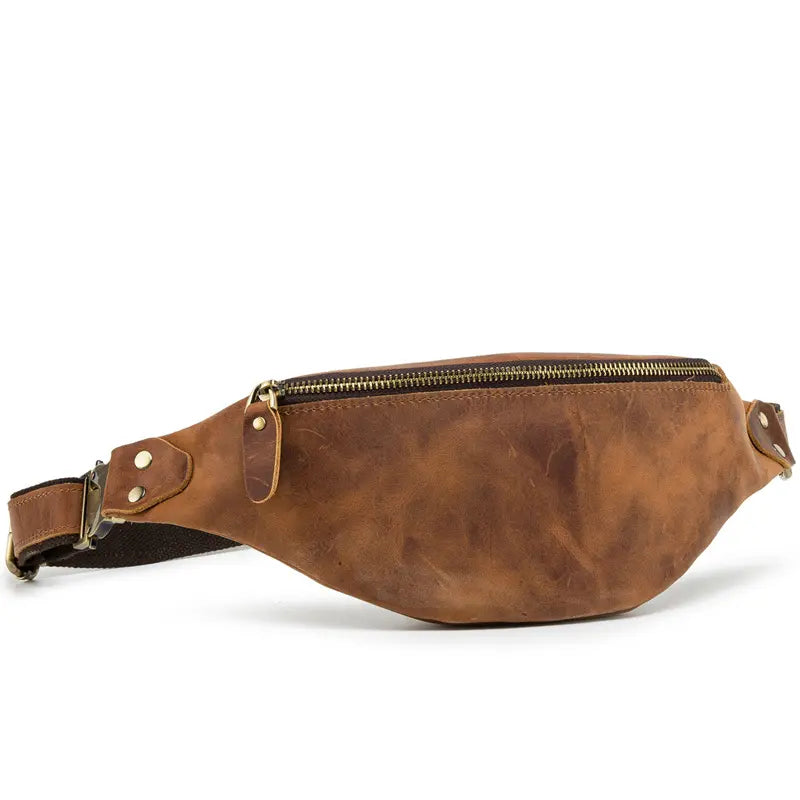
Amplify your style statement effortlessly with the unparalleled craftsmanship and unique character of the Wagner Leather Waist Bag from the 'Essence of Leather Belt Bags' collection. Made of high-quality full-grain cowhide crazy horse leather, this bag boasts dimensions of 13.78 L x 4.53 H x 2.76 W and weighs just 1.19 lbs. The crazy horse leather is waxed for water resistance and durability, ensuring longevity. What sets this bag apart is its individuality; each piece is distinct due to the unique wax application, and it evolves in color and gains character with use. Embrace the freedom to express your trend-conscious style with this exceptional piece that effortlessly marries functionality and fashion.
Best For: Outdoor enthusiasts looking for a durable and stylish hands-free option for carrying essentials.
Pros:
-
Made of high-quality full-grain cowhide crazy horse leather for durability
-
Water-resistant waxed leather for added protection
-
Evolves in color and gains character with use, creating a unique look
Cons:
-
Weight of 1.19 lbs may feel heavy for some users
The Walcott Leather Waist Bag
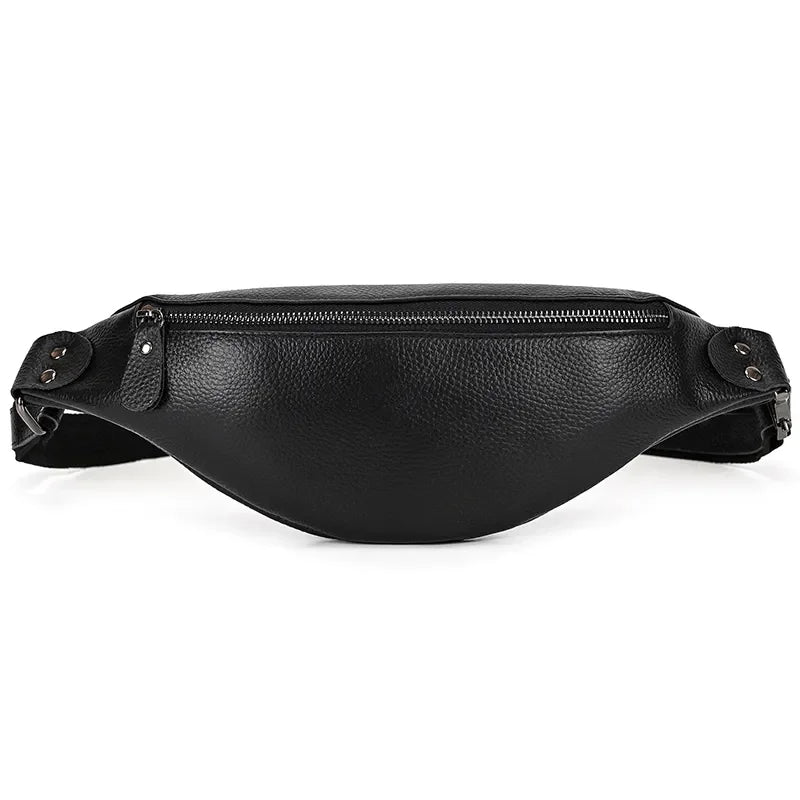
For those seeking a blend of elegance and functionality in their accessories, 'The Walcott Leather Waist Bag' stands out as the premier choice among leather belt bags on the market. Crafted from high-quality full-grain black pebbled leather, this waist bag exudes sophistication and durability. The unique crazy horse leather used in its making not only gives it a vintage look but also makes it highly resistant to water and liquids, ensuring your belongings stay safe. With a focus on individuality, each bag ages beautifully over time, developing a distinctive antique appearance that sets you apart. To make this stylish piece yours, simply click on the desired product category, add it to your shopping bag, and proceed to checkout with various payment options available.
Best For: Those who value both style and functionality in their accessories and seek a durable and water-resistant waist bag with a unique vintage appearance.
Pros:
-
Crafted from high-quality full-grain black pebbled leather, ensuring sophistication and durability.
-
Unique crazy horse leather construction provides a vintage look and high resistance to water and liquids.
-
Ages beautifully over time, developing a distinctive antique appearance for a personalized touch.
Cons:
-
May require extra care and maintenance due to the special leather construction.
Frequently Asked Questions
How Have Belt Bags Evolved Over Time in Different Cultures?
Belt bags, also known as fanny packs or waist bags, once simple pouches for carrying essentials, have transformed across cultures over time. From early utilitarian designs featuring basic leather belt construction to modern designs with adjustable strap systems, these functional accessories have evolved to meet both practical and stylish needs. Different cultures have influenced the shapes, materials, and embellishments of these versatile accessories, reflecting unique traditions and trends. The traditional fanny pack has expanded into a wide range of styles, from minimalist design options to bold colors with vibrant pack aesthetics. As societies change, so do the functions and aesthetics of belt bags, making them popular accessories with a rich history of adaptation and innovation, incorporating everything from durable materials like buttery leather to modern vegan leather alternatives.
Are There Any Superstitions or Taboos Associated With Wearing Belt Bags in Certain Regions?
In some regions, superstitions or taboos may indeed be associated with wearing waist packs and money belts. These beliefs can vary widely, from concerns about financial luck when carrying a credit card or personal items to notions of personal safety. It's fascinating to observe how different cultures attribute significance to everyday wear items like these handy accessories. The status of belt bags varies significantly across cultures, with some viewing the crossbody style or crossbody bags as more acceptable than the traditional belt-worn position. By being aware of these cultural nuances, you can respectfully navigate various regions and traditions while sporting your stylish statement piece. Keep an open mind and embrace the diversity of beliefs around the world when choosing from the variety of colors and styles available!
How Do Belt Bags Reflect Social Status in Different Cultures?
Belt packs serve as an emblem of social standing across various cultures. In many societies, the material, design, and whether it's created by a renowned fashion designer can indicate one's wealth and influence. The size and intricacy of the bag may also convey status - from larger fanny packs with multiple zippered pockets and internal pockets to sleek designs with card slots for essential items. From high-end fashion accessories featuring luxurious materials to traditional artisanal craftsmanship, these perfect accessories can be a subtle yet powerful symbol of social hierarchy. The choice between a leather fanny pack versus other materials, or selecting pieces in emerald green or other sophisticated hues, can reflect personal style and social position, making them a fascinating accessory to explore in different cultural contexts.
Have There Been Any Controversial Moments in History Involving Belt Bags and Cultural Appropriation?
Controversial moments in history involving these fashion accessories and cultural appropriation have sparked debates within mainstream fashion. Instances where fashion brands have borrowed designs from specific cultures without proper credit have faced backlash, particularly when adapting traditional shapes like cylindrical shape or heart shape bags for modern twist interpretations. This has raised awareness about the importance of respecting and acknowledging the origins of cultural symbols, especially as belt trends evolve in the current fashion trend status. It serves as a reminder to appreciate and celebrate diversity without appropriating it for commercial gain, whether dealing with curved shape designs or elegant crescent shape variations. Such incidents highlight the need for sensitivity and understanding in the fashion industry, particularly as creative directors navigate the fine line between inspiration and appropriation in fashion for spring summer collections and style for spring summer trends.
What Are Some Lesser-Known Ways That Belt Bags Have Been Used in Traditional Ceremonies or Rituals Around the World?
These hands-free bags have been utilized in various traditional ceremonies and rituals worldwide, serving both practical and symbolic purposes beyond their casual vibe association. In some cultures, waist packs are worn during dances to hold sacred items or offerings, often featuring mesh pockets or special compartments to keep belongings dry during outdoor ceremonies. Others use them as a symbol of status or belonging within their community, sometimes incorporating elements similar to historical safety belt or even ceremonial slimline belts designs, though distinctly different from items like the chastity belt which served entirely different purposes.
These lesser-known uses demonstrate the versatility beyond their modern-day fashion statement appeal, showcasing their significance in cultural practices and traditions. Outdoor enthusiasts in various cultures have long recognized these as essential items, whether carrying a water bottle, lip balm, or pack of wipes for ceremonial cleansing. The evolution from basic belt loops attachment to sophisticated adjustable shoulder strap systems has allowed these timeless classics to adapt to different body types and cultural requirements.
Modern interpretations suitable for everyday essentials continue to honor these traditional roots while incorporating contemporary features like perfect belt integration, midsize fanny pack proportions for flat items, and even specialized compartments that could theoretically hold items as varied as champagne bottles for celebration ceremonies or extra-large pack configurations for extended rituals, making them the perfect accessory for bridging traditional and contemporary needs.
Conclusion
To sum up, belt bags have evolved over time to become more than just a fashion accessory - they are cultural symbols with deep roots in traditions around the world. From historical perspectives to modern interpretations, these bags carry meaning and significance that go beyond their practical use. As fashion continues to be influenced by diverse cultures, belt bags serve as a reflection of our global interconnectedness and the beauty of cultural exchange in the world of style.




















